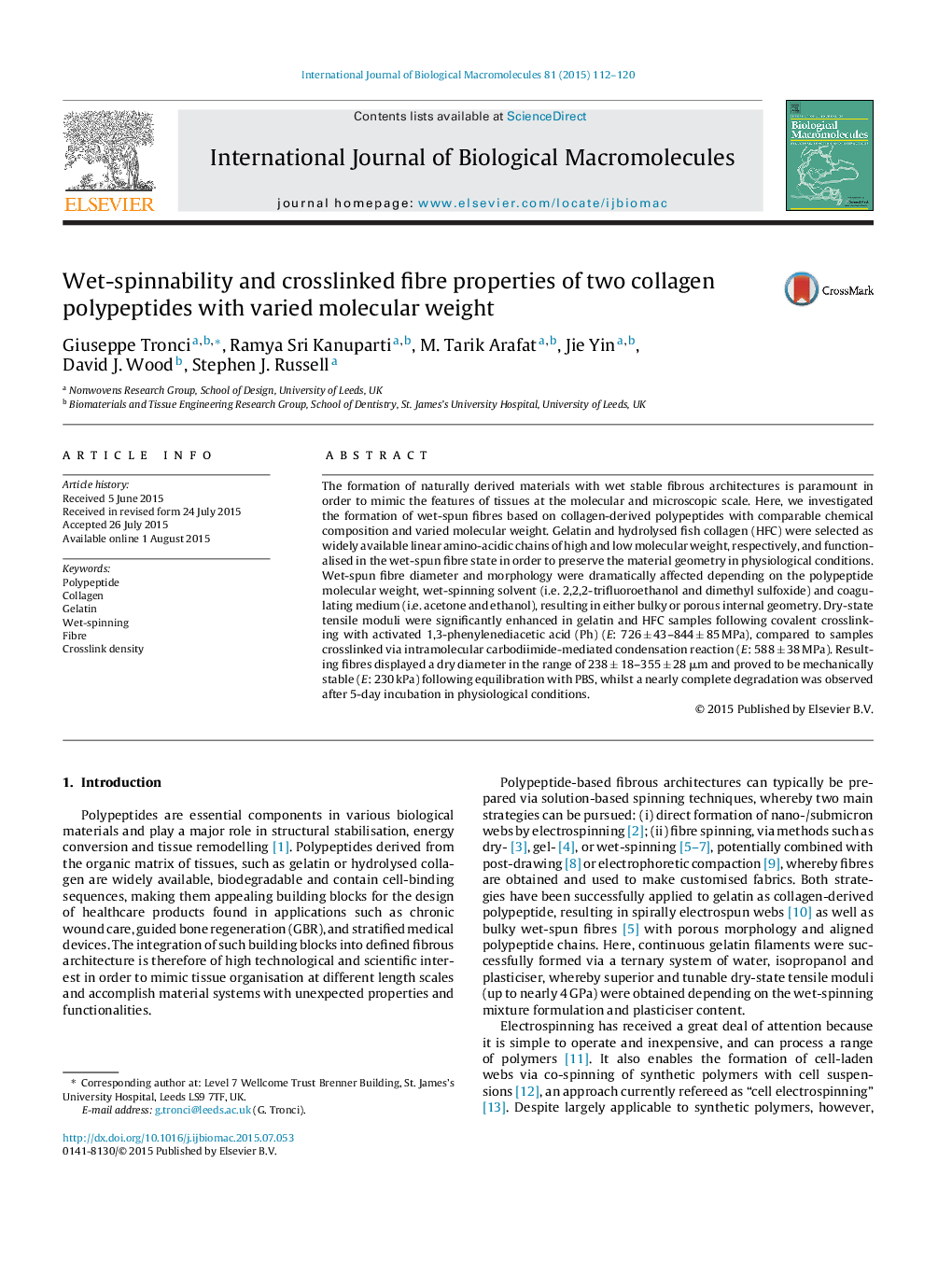| Article ID | Journal | Published Year | Pages | File Type |
|---|---|---|---|---|
| 8330045 | International Journal of Biological Macromolecules | 2015 | 9 Pages |
Abstract
The formation of naturally derived materials with wet stable fibrous architectures is paramount in order to mimic the features of tissues at the molecular and microscopic scale. Here, we investigated the formation of wet-spun fibres based on collagen-derived polypeptides with comparable chemical composition and varied molecular weight. Gelatin and hydrolysed fish collagen (HFC) were selected as widely available linear amino-acidic chains of high and low molecular weight, respectively, and functionalised in the wet-spun fibre state in order to preserve the material geometry in physiological conditions. Wet-spun fibre diameter and morphology were dramatically affected depending on the polypeptide molecular weight, wet-spinning solvent (i.e. 2,2,2-trifluoroethanol and dimethyl sulfoxide) and coagulating medium (i.e. acetone and ethanol), resulting in either bulky or porous internal geometry. Dry-state tensile moduli were significantly enhanced in gelatin and HFC samples following covalent crosslinking with activated 1,3-phenylenediacetic acid (Ph) (E: 726 ± 43-844 ± 85 MPa), compared to samples crosslinked via intramolecular carbodiimide-mediated condensation reaction (E: 588 ± 38 MPa). Resulting fibres displayed a dry diameter in the range of 238 ± 18-355 ± 28 μm and proved to be mechanically stable (E: 230 kPa) following equilibration with PBS, whilst a nearly complete degradation was observed after 5-day incubation in physiological conditions.
Related Topics
Life Sciences
Biochemistry, Genetics and Molecular Biology
Biochemistry
Authors
Giuseppe Tronci, Ramya Sri Kanuparti, M. Tarik Arafat, Jie Yin, David J. Wood, Stephen J. Russell,
